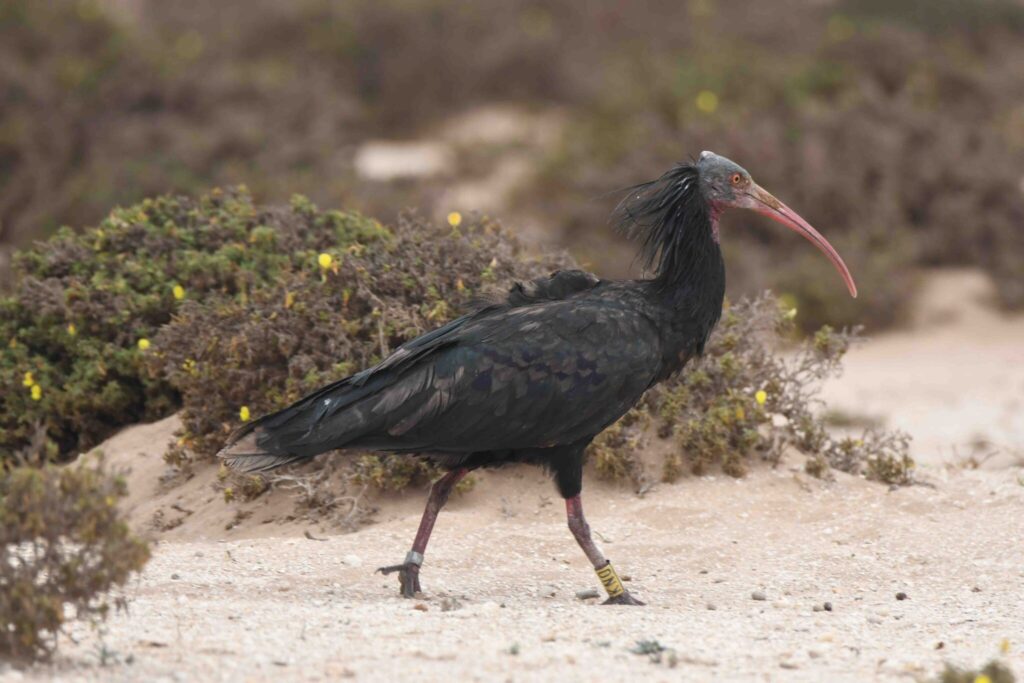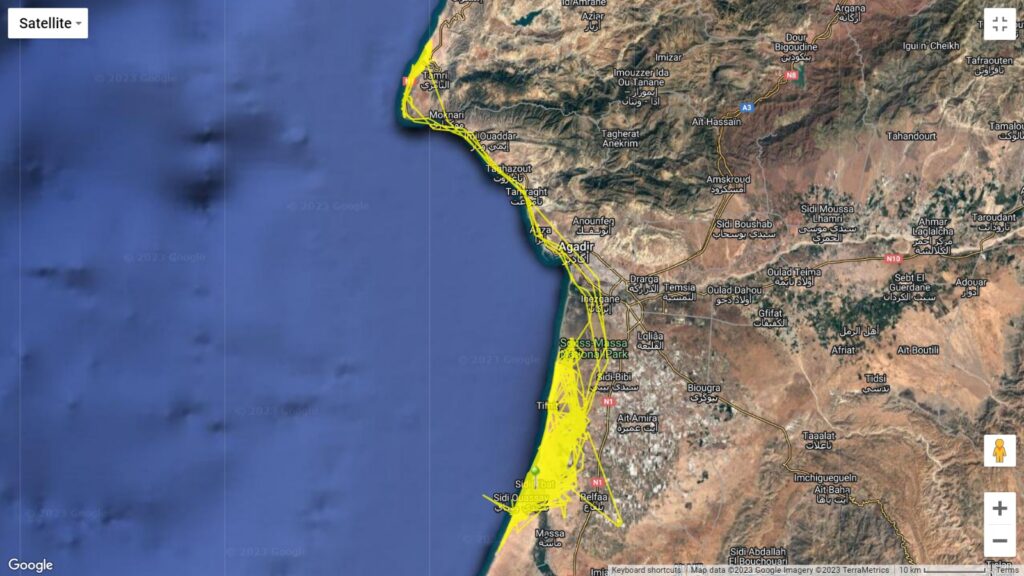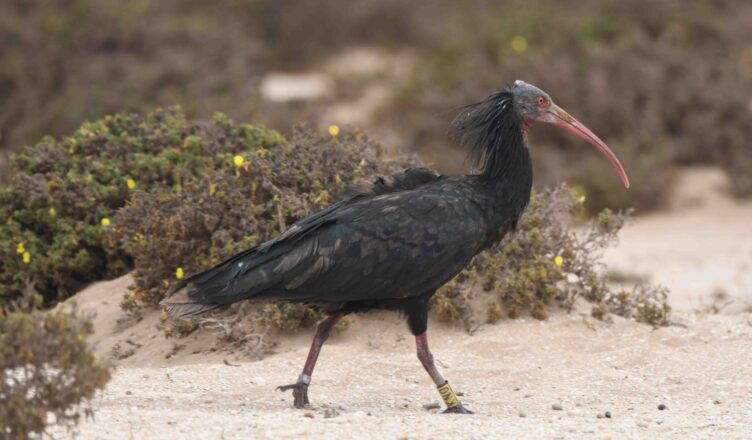Le 26 septembre 2023, Hamid Mezane a photographié un Ibis chauve bagué à Sidi Wassay dans le Parc national de Souss-Massa (une bague PVC jaune sur la patte droite (KNO) et une bague métallique sur la patte gauche).
La photo a été partagée dans ce lien avec l’histoire de vie de l’oiseau, qui indique qu’il a été bagué en Espagne. Cependant, ce n’est pas exact et le but de cet article est de rectifier cela. En tant que scientifiques et gestionnaires de la conservation, nous pensons que cela est nécessaire, car ces informations ont de réelles implications en matière de conservation de l’espèce.
L’oiseau a été capturé, bagué et équipé d’une balise GPS dans l‘estuaire de Tamri le 24 septembre 2019. Au moment de la capture, l’oiseau était adulte dans sa troisième année civile (c’est-à-dire qu’il est né en 2017).
Selon les informations partagées par Widad Oubrou de la Direction du PNSM, les observations ultérieures ont montré que cet individu est une femelle et qu’il a commencée à se reproduire en 2022.
En 2019 et 2021, 12 Ibises chauves ont été capturés et équipés par des balises GPS dans le cadre d’un projet collaboratif entre le GREPOM/BirdLife Maroc, la Direction du PNSM et l’ANEF. Le projet a été financé par BirdLife Suisse via SEO/BirdLife. Outre les principaux partenaires du projet, la Junta de Andalucía et l’Association Marocaine pour la Protection des rapaces (AMPR) ont également contribué au travail de terrain en 2019 et en 2019 et 2021 respectivement.
Le projet vise, entre autres, à mieux comprendre l’écologie des déplacements de l’espèce, à détecter les menaces potentielles et à découvrir de nouveaux sites de reproduction potentiels.
Nous remercions Hamid Mezane pour avoir photographié l’oiseau, Halima Bousadik pour avoir partagé l’information et Widad Oubrou pour avoir fourni le statut de reproduction récent de l’oiseau.


Northern Bald Ibises colour-ringed and tracked by GPS tags in Morocco
On 26 September 2023, Hamid Mezane Sidi Wassay in the Souss-Massa National Park (a yellow PVC ring on the right leg (KNO) and a metal ring on the left leg). The photo was shared in this link along with the bird’s life history of which indicated that it was ringed in Spain. However, this is not correct, and the purpose of this post is to rectify this. As scientists and conservation managers, we believe this is necessary because there are real conservation implications of this information.
The bird in question was hearing a. The bird was captured, ringed and equipped with a GPS transmitter at Tamri estuary on 24 September 2019. At the time of the capture, the bird was an adult in its third calendar year (meaning it was born in 2017).
According to the information shared by Widad Oubrou from the Direction of the PNSM, subsequent observations showed that the bird is a female and that it started breeding in 2022.
In 2019 and 2021, 12 Northern Bald Ibises were captured and equipped with GPS transmitters in the framework of a collaborative project between GREPOM/BirdLife Morocco, the Direction of the PNSM and ANEF. The project was financed by BirdLife Switzerland through SEO/BirdLife. In addition to the project’s core partners, Junta de Andalucía and the Moroccan Association for Raptor Protection (AMPR) have also contributed to the fieldwork in 2019 and in 2019 and 2021 respectively.
The project aims, among others, to better understand the movement ecology of the species, detect potential threats, and discover potential new breeding sites.
We thank Hamid Mezane for photographing the bird, Halima Bousadik for originally sharing the information, and Widad Oubrou for providing the recent breeding status of the bird.

